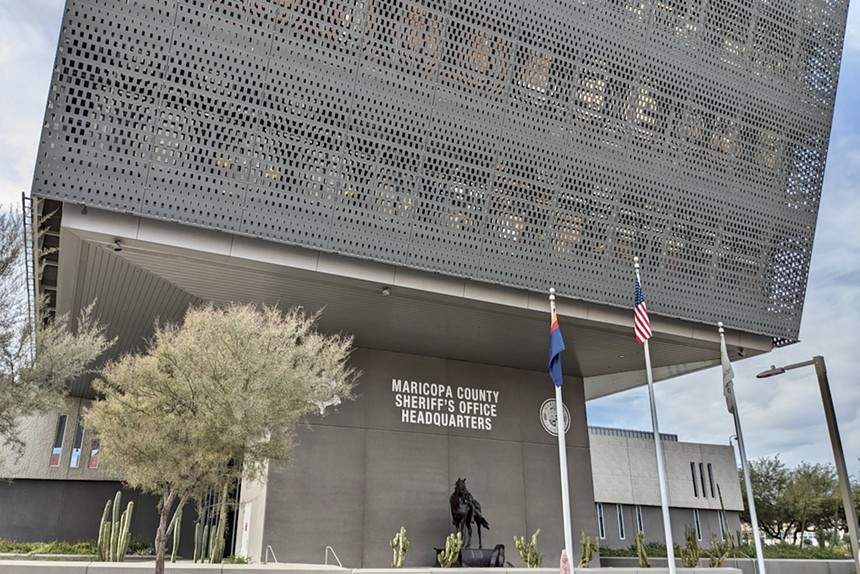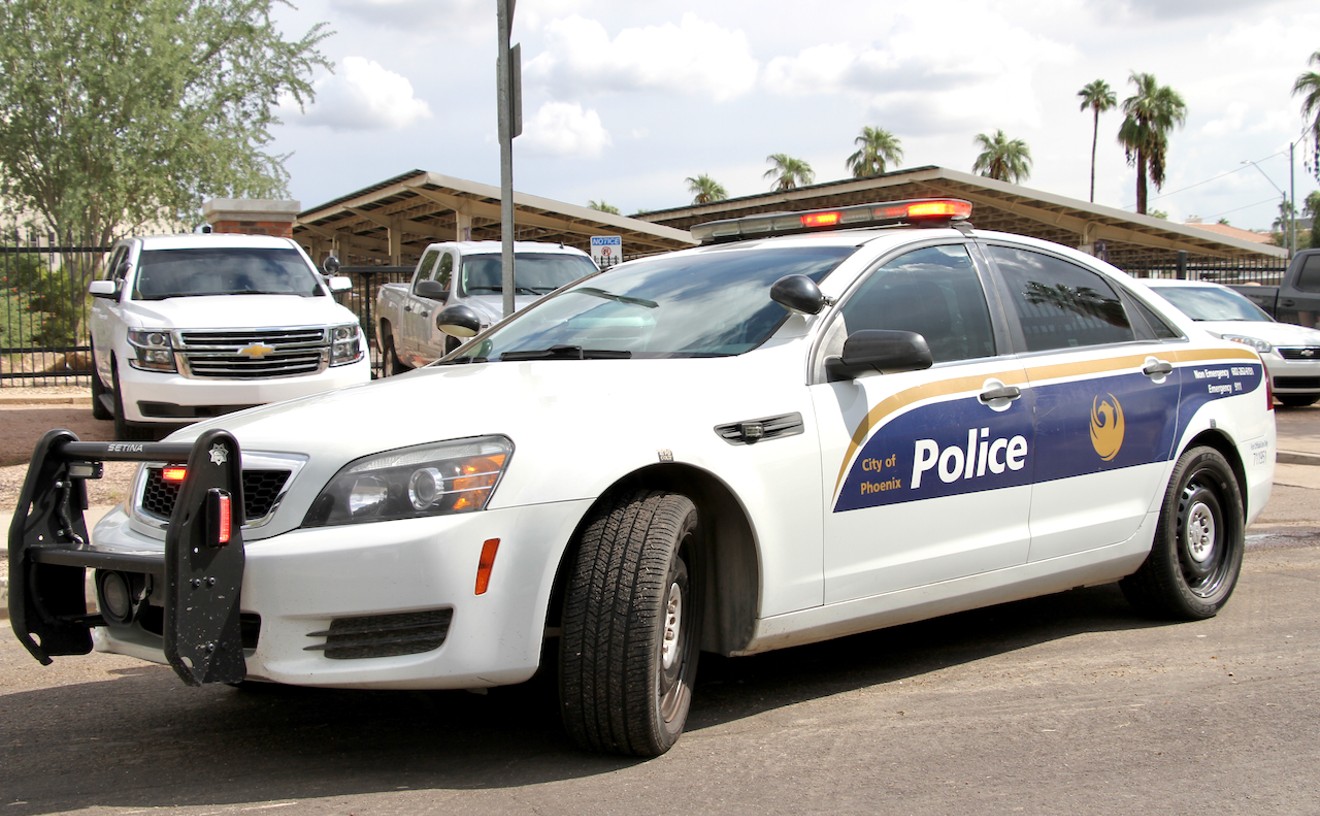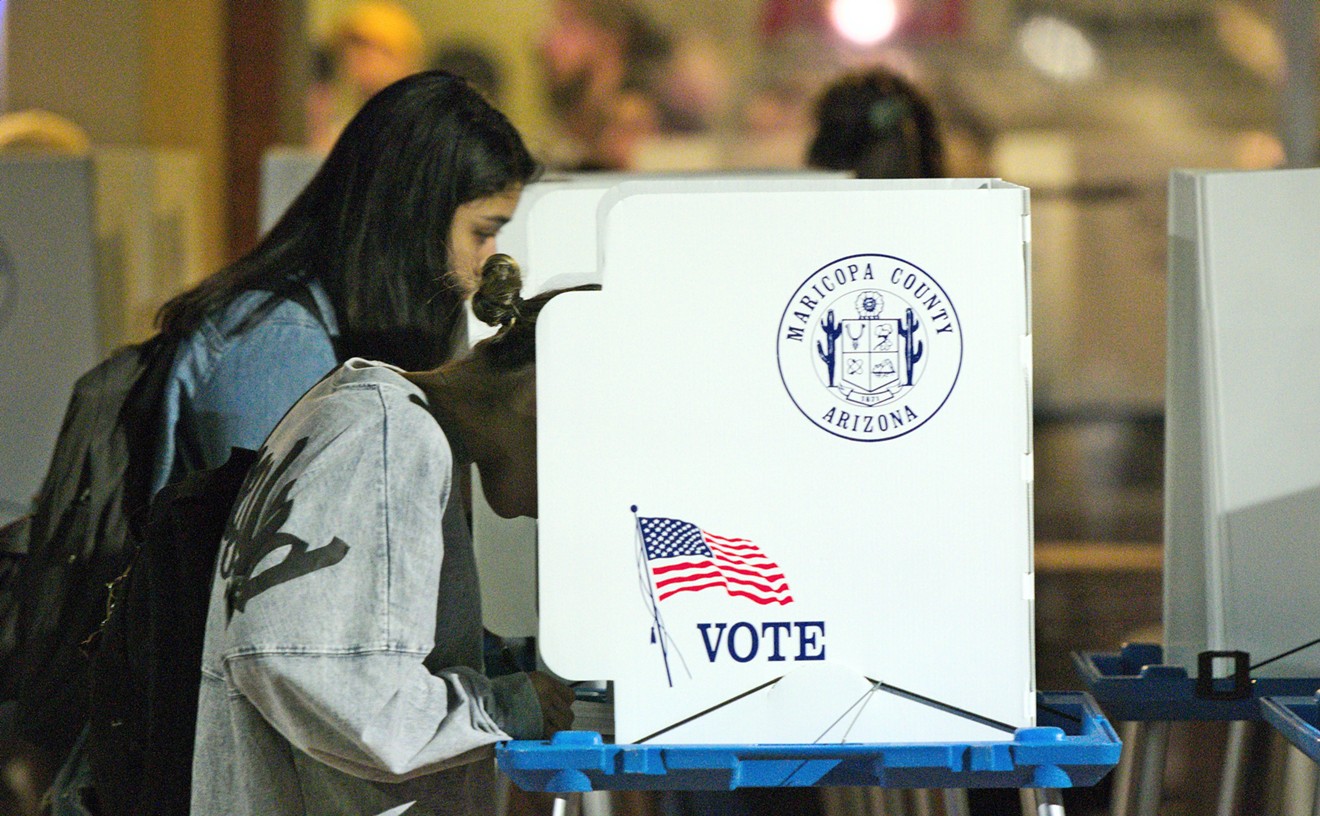That leaves the state with a muddy picture — at best — of crimes targeting people based on race, religion, disability, sexual orientation, ethnicity, gender and gender identity.
It's a common issue in Arizona, according to Sarah Kader, a spokesperson with the Anti-Defamation League's regional office in Phoenix.
"Generally, we know that hate crime data and general data that we receive is underreported, so usually we're not even seeing the full picture," Kader told Phoenix New Times. "If we're seeing some incidents, that means there are many more we're not hearing about."
She said the ADL, which creates its own reports that are separate from the FBI's annual data dives, has been in talks with the governor's office to improve the accuracy of how the state tracks crimes.

The Maricopa County Sheriff's Department cited understaffing and software issues as two reasons why the agency didn't submit hate crime statistics to the FBI.
Matt Hennie
Missing data from Phoenix police, Maricopa sheriff's office
Each year, the FBI issues an annual report on crime statistics in the U.S. The data it provides is self-reported from thousands of law enforcement agencies across the country through the Uniform Crime Reporting Program. Agencies submit data to that program through the National Incident-Based Reporting System and the Summary Reporting System.In 2021, the FBI transitioned to collecting the reports only through the NIBRS, which is a more comprehensive data program that tracks 71 offenses, plus 10 more offenses reported only after an arrest takes place. But the FBI's change in reporting systems meant that more than 6,000 law enforcement agencies stopped supplying data, representing nearly one-third of the nation’s 18,000 police agencies, according to The Marshall Project.
The number of agencies reporting data to the FBI increased in 2022, but the Phoenix Police Department and Maricopa County Sheriff's Office still do not. Nearly 23% of Arizonans fall under the jurisdiction of Phoenix police, while the sheriff's office is the fourth-largest in the U.S.
Phoenix police didn't report any data in 2022, while the sheriff's office failed to submit data for multiple quarters in 2022. Both agencies also failed to report complete crime statistics to the FBI in 2021.
The two agencies are among 44 — or nearly one-third — in Arizona that didn't report crime statistics to the FBI for its 2022 report. Only 83 of the state's 127 law enforcement agencies provided complete data.
According to Sgt. Phil Krynsky, a spokesperson for Phoenix police, the agency hasn't submitted crime data partly because of process inefficiencies and software incompatibility.
“The amount of detail required for NIBRS in an agency our size requires automation and software modifications,” Krynsky said. "We have implemented some of the fields in our current software but have not been able to get to all of them to make the process more efficient."
Krynsky added that software modifications and updates have been costly. Since 2016, the agency has received $2.4 million from the federal Bureau of Justice Statistics to upgrade its software. But the agency isn't sure when it will fully upgrade its systems, Krynsky added.
"Until then, we will continue to post our UCR (Uniform Crime Reporting) summary data on our website, just as we have done for years, so that our community members still have access to the same information we have posted previously," he said.
A backlog with the reporting system at the sheriff's office, coupled with technology issues and staffing shortages, has caused delays in submitting crime data to the FBI, said sheriff's office spokesperson Sgt. Joaquin Enriquez.
“There are insufficient software reporting tools that MCSO does not have which are needed for the reporting, in addition to personnel shortages,” he said in an emailed statement.
Enriquez did not provide additional information about the backlog or when the agency expects to complete it.

The Phoenix Police Department doesn't submit crime data to the FBI's annual report, but does post the information on its website.
Matt Hennie
An incomplete crime picture
While Phoenix police fail to report crime data to the FBI, the agency does post crime maps, annual statistics and bias crimes on its website. In 2022, the agency recorded 106 hate crimes. Of those, the most (37) targeted Black people, while 26 were motivated by LGBTQ+ bias, according to police. Several incidents targeted people based on race or religion: Latino (21), white (9), Native American (1), Jewish (6) and Muslim (1).In 2021, Phoenix police reported 140 hate crimes.
The sheriff's office does not post crime statistics on its website. Instead, it points people to the Community Crime Map from LexisNexis. It's a cumbersome tool to try and see crime statistics for all of Maricopa County. The map also does not include filters to view only hate crimes.
Kader pointed out that any of the statistics from police agencies only represent the crimes that were reported and recorded.
"It's really important to have an accurate reflection of what we have seen in the past year," Kader said. "We're really encouraging folks to report incidences. If you see something, say something."












